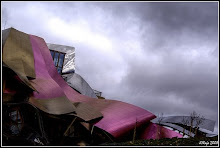
1972: President Nixon arrives in Moscow
President Richard Nixon has arrived in Moscow for talks with Soviet leaders.
He was given a modest welcome as he stepped off the plane at Vnukovo airport with his wife.
The welcome party consisted of Soviet president Nikolai Podgorny, Prime Minister Alexei Kosygin and Foreign Minister Andrei Gromyko.
A twenty-minute ceremony, during which the president briefly inspected a guard of honour, was held and broadcast live by Moscow television.
The national anthems of both countries were played and a carefully selected group of Soviet citizens dutifully, but silently, waved American and Soviet flags.
Many observers were hoping the war in Vietnam and the nuclear arms race would be high on the agenda.
For the first time in history the stars and stripes flag of America flew over the Grand Palace of the Kremlin to mark the visit.
This evening President Nixon and his wife attended a banquet at the Kremlin. The couple walked along a red carpet and up a 60-step staircase into the Granovit banqueting hall, where the two presidents drank toasts to peace.
There are known differences between the two men on such issues as the war in Vietnam and the Middle East.
President Nixon spoke about the need for co-operation and reciprocation between the two countries in their efforts to conquer disease, improve the environment, and to expand bilateral trade and economic links.
He said he was eager to make the summit a memorable one for its substance.
During his speech he alluded to Vietnam: "We should recognise that it is the responsibility of great powers to influence other nations in conflict or crisis to moderate their behaviour."
He also spoke of a possible arms agreement which, he said "could begin to turn our countries away from a wasteful and dangerous arms race and towards more production for peace".
President Podgorny said the Soviet Union wanted not just good but friendly relations with the US.



